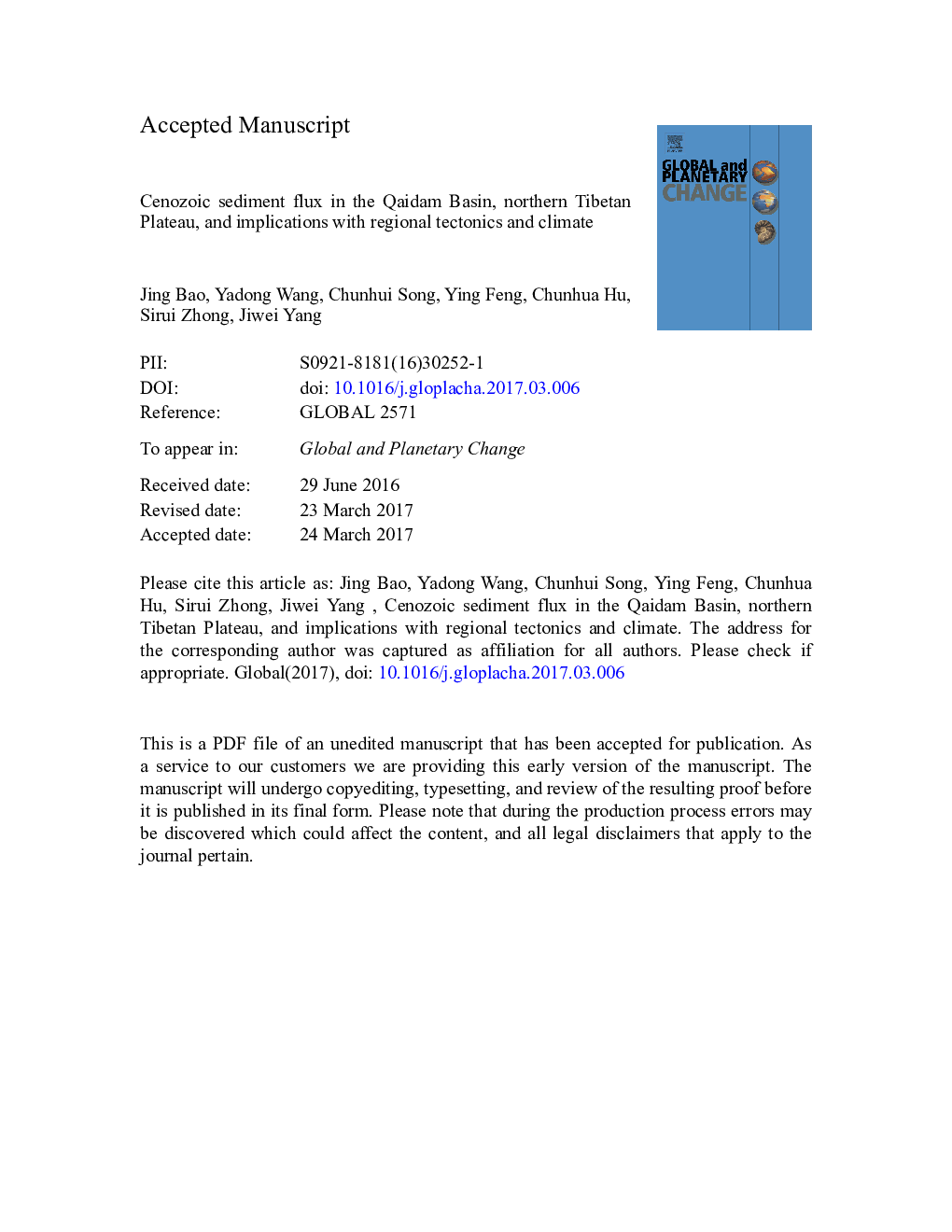| کد مقاله | کد نشریه | سال انتشار | مقاله انگلیسی | نسخه تمام متن |
|---|---|---|---|---|
| 5755253 | 1621627 | 2017 | 52 صفحه PDF | دانلود رایگان |
عنوان انگلیسی مقاله ISI
Cenozoic sediment flux in the Qaidam Basin, northern Tibetan Plateau, and implications with regional tectonics and climate
ترجمه فارسی عنوان
جریان رسوبی کانوزوئیک در حوضه قائد، شمال افریقا تبت، و پیامدهای آن با زمین شناسی و آب و هوای منطقه ای
دانلود مقاله + سفارش ترجمه
دانلود مقاله ISI انگلیسی
رایگان برای ایرانیان
کلمات کلیدی
کنزوئیک، حوزه قیدام، مقطع متوازن، شار اولیه افزایش تکتونیکی، تغییر آب و هوا،
موضوعات مرتبط
مهندسی و علوم پایه
علوم زمین و سیارات
فرآیندهای سطح زمین
چکیده انگلیسی
As the largest Mesozoic-Cenozoic terrestrial intermountain basin in the northern Tibetan Plateau, the Qaidam Basin is an ideal basin to examine the influences of regional tectonics and climate on sediment flux. Research conducted over the last two decades has provided abundant information about paleoclimatology and tectonic histories. In this study, we used the restoration of seven balanced cross-sections and compiled thickness data of ten outcrop sections and four boreholes to reconstruct the basin boundaries, develop isopach maps, and calculate the sediment flux in the Qaidam Basin. Our results show that the sediment flux in the Qaidam Basin increased gradually between 53.5 and 35.5Â Ma, decreased to its lowest value from 35.5 to 22Â Ma, increased between 22 and 2.5Â Ma, and then increased dramatically after 2.5Â Ma. By comparing the changes in the sediment flux with our reconstructed shortening rate in the Qaidam Basin, and the records of regional tectonic events and regional and global climate changes, we suggest that the gradual increase in the sediment flux from 53.5 to 40.5Â Ma was controlled by both the tectonic uplift of the Tibetan Plateau and the relatively warm and humid climate, and that the high sediment flux from 40.5 to 35.5Â Ma was mainly controlled by tectonics. The low sediment flux from 35.5 to 22Â Ma was a response to the relatively cold and arid climate in a stable tectonic setting. The relatively high sediment flux between 22 and 15.3Â Ma was related to tectonic activity and the warm and humid climate. The intense tectonic uplift of the northern Tibetan Plateau and the frequent climate oscillations after 15.3Â Ma, particularly the glacial-interglacial cycles after 2.5Â Ma, caused the high sediment flux after 15.3Â Ma and the dramatic increase after 2.5Â Ma, respectively.
ناشر
Database: Elsevier - ScienceDirect (ساینس دایرکت)
Journal: Global and Planetary Change - Volume 155, August 2017, Pages 56-69
Journal: Global and Planetary Change - Volume 155, August 2017, Pages 56-69
نویسندگان
Jing Bao, Yadong Wang, Chunhui Song, Ying Feng, Chunhua Hu, Sirui Zhong, Jiwei Yang,
